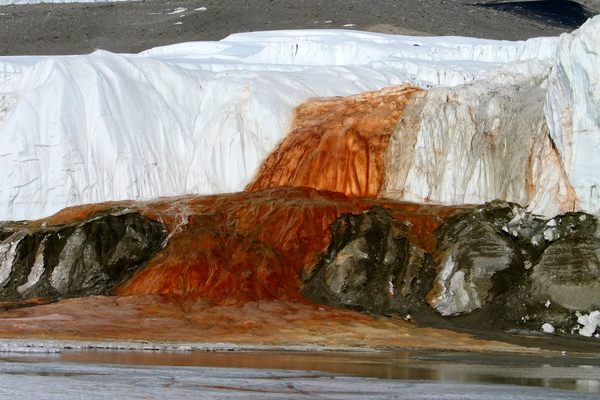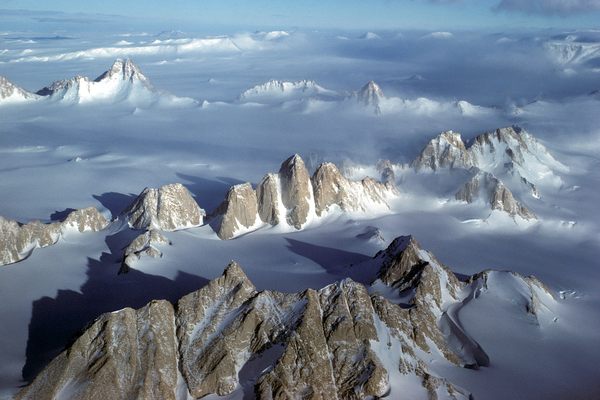For Sale: The First Book Printed in Antarctica
It’s filled with funny accounts from Ernest Shackleton’s Nimrod expedition.

On January 29, 1908, the crew of the Nimrod landed at Antarctica’s McMurdo Sound. Led by Ernest Shackleton—the first of three trips he commanded—the small team of explorers would spend the next two years ranging over the continent. Although they never achieved their chief objective of reaching the geographic South Pole, they did bring the first motorcar to Antarctica and summit Mount Erebus for the first time.
To while away the lonely hours when they couldn’t be outside, they also wrote, illustrated, and printed a book—the first one ever made on that continent. Called the Aurora Australis, one copy of the book is up for auction tomorrow, September 25, 2018, at Bonham’s, part of a larger sale focused on exploration and travel.

Winter in Antarctica is long and dark, and the crew had to spend much of it in a small hut on the west side of the Ross Archipelago. In addition to the many materials necessary for survival and science, Shackleton made sure to bring along some fun activities to stave off what he called “polar ennui.” As he details in The Heart of the Antarctic, these included hockey sticks, a football, a gramophone and records, and “a printing press with type, rollers, paper and other necessities, for the production of a book during the winter night.”
When winter came, he continues, several of the men “spent much time in the production of the ‘Aurora Australis,’ the first book ever written, printed, illustrated and bound in the Antarctic.” For the rest of the materials, they reused whatever they had handy, including old crates of food, cleaned and planed down by Bernard Day, normally the expedition’s mechanic. (The particular copy up for sale says “OATMEAL” on the inside front cover, and is “backed in leather from a horse harness,” according to Bonham’s.)

The expedition artist George Marston illustrated the book. It was typeset and printed by Ernest Joyce, normally in charge of dogs and sledges, and Frank Wild, who handled provisions. This was a laborious process that involved heating the inking plate with a candle, “so that the ink would keep reasonably thin in consistency,” and waiting until everyone was asleep to do the actual printing, so their movements wouldn’t vibrate all the lines into squiggles.
Shackleton served as editor, and solicited submissions from the crew. He chose to include everything from an interview with an Emperor Penguin to a tongue-in-cheek, faux-Biblical account of the expedition. In one chapter, an anonymous messman details the trials and tribulations of his job. In another, the geologist Douglas Mawson describes an journey to an imaginary place called Bathybia, hidden inside an Antarctic volcano, where fungi grow and temperatures reach a balmy 70 degrees. (You can read the entire digitized book over at archive.org.)

They printed about 100 copies, which they later distributed to friends and benefactors. Just under 70 are currently accounted for. (Occasionally a new one is found—as when, in 2006, someone located the MARMALADE edition in a stable in Northumberland, England.) If nothing else, Shackleton writes, the book “at least assisted materially to guard us from the danger of lack of occupation during the polar night.”
The book is Lot 55 at the auction, which also includes a number of other Antarctic travelogues, maps, and paintings. It is expected to fetch between $70,000 and $100,000. Not bad for something made out of an old oatmeal crate.












Follow us on Twitter to get the latest on the world's hidden wonders.
Like us on Facebook to get the latest on the world's hidden wonders.
Follow us on Twitter Like us on Facebook